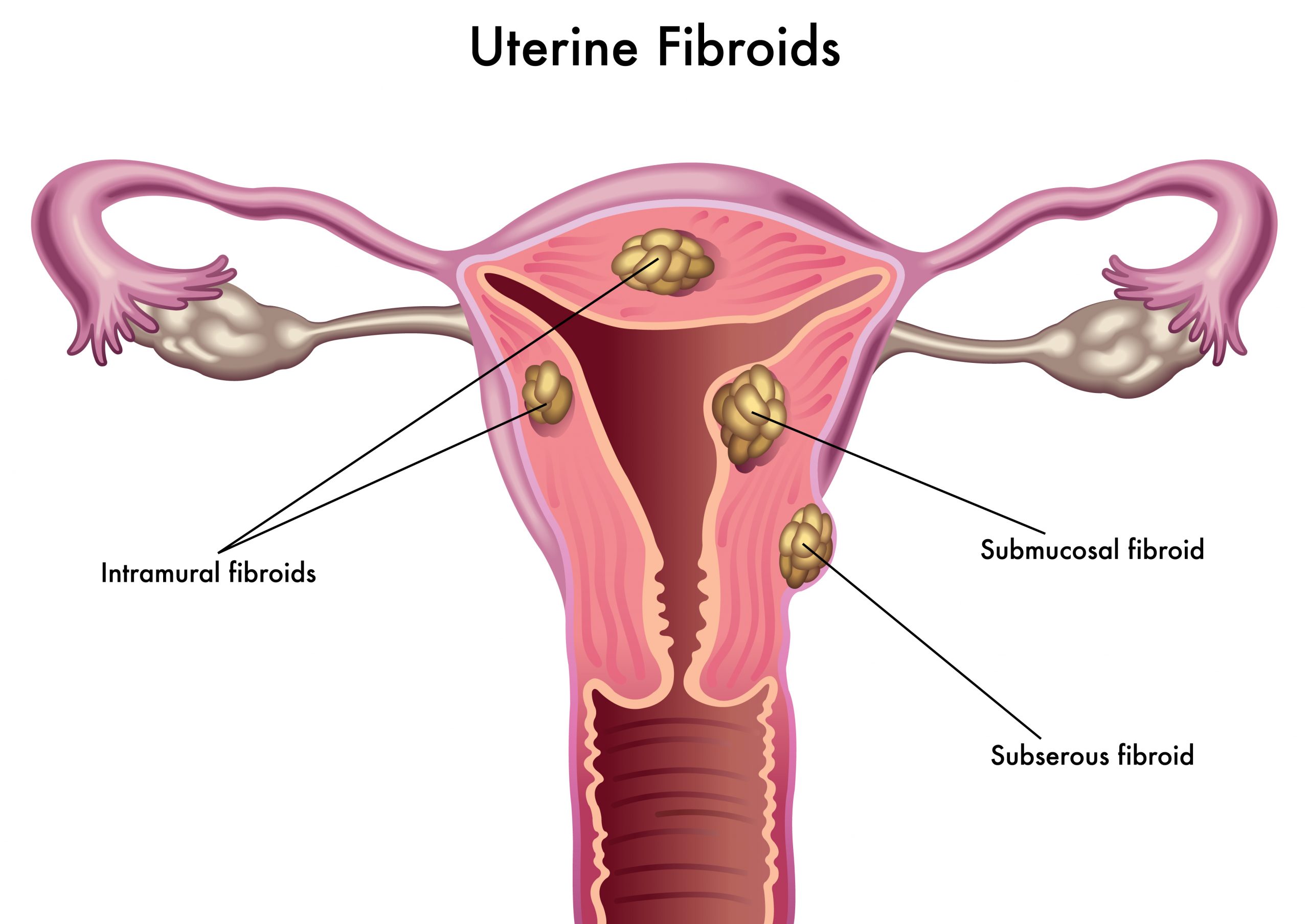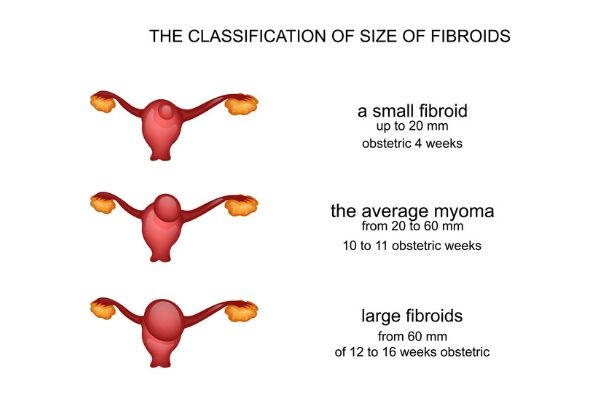
If you’ve heard of uterine fibroids, but don’t really know what they are or if you’re at risk, you’ve come to the right place. Many women with fibroids suffer from heavy periods, severe cramps, frequent urination, and low energy.
Read on to learn everything you need to know about fibroids including the impact they can have on everyday life and what to do after you’ve been diagnosed.

What Are Fibroids?
Uterine fibroids are noncancerous tumors that develop within the uterus or uterine wall. Although not usually considered dangerous, these growths can harm surrounding organs, impact fertility, and lead to a range of painful symptoms. Individuals may develop single or multiple fibroids, and they can range from pea-sized to as large as a melon. Shockingly, some fibroids can weigh over 20 pounds!
Who Is at Risk?
Uterine fibroids are surprisingly common for women who are in their 30s. So common in fact, they have been found to affect up to 80% of women by the age of 50. Those of African-American descent are disproportionately affected –– and anyone who has a close female relative, such as a mom or grandma with fibroids, is more likely to develop them.
Although the causes of fibroids are not entirely understood, it is believed they are influenced by hormones affecting the uterine lining –– namely, estrogen and progesterone. Studies show that women often experience fibroid growth during times of hormonal influx, such as during pregnancy. Inversely, when hormone levels drop –– like after pregnancy or during menopause –– fibroids tend to shrink.
Additional factors that may influence fibroid growth include genetic changes, other growth factors, and a substance called Extracellular Matrix (ECM). While there is no known way to prevent fibroids, there are several effective treatments available, and following a healthy lifestyle can help with overall symptom management and quality of life.

What Are the Symptoms of Fibroids?
Fibroids affect women in different ways. For example, some women with uterine fibroids never experience symptoms at all, white others are severely impacted, with related issues negatively influencing career, social life, self-esteem, and intimate relationships. The type, number, size, and location of the fibroid(s) involved can impact which, if any, symptoms occur.
Common fibroid symptoms include:
- Heavy or prolonged menstruation
- Bleeding between periods
- Anemia, which can lead to fatigue
- Pain during intercourse
- Frequent urination
- Constipation and/or bloating
- Pain in your pelvis or lower back
- Increased menstrual cramping
- Protruding abdomen, mimicking pregnancy
What Are the Different Types of Fibroids?
There are four main types of uterine fibroids, based on location:
- Intramural fibroids are embedded in the muscular wall of the uterus
- Subserosal fibroids grow on the outside of the uterus and bulge into the pelvic or abdominal cavity
- Pedunculated fibroids are attached to the uterine wall by a stalk-like growth
- Submucosal fibroids bulge into the uterine cavity

When Should I See a Doctor?
If you are experiencing fibroid symptoms, you should seek medical evaluation as soon as possible for a proper diagnosis. A variety of other conditions affecting the female reproductive tract–– some of which may be life-threatening –– can involve similar signs. Keep in mind that when it comes to most medical issues, early diagnosis is key for the best outcome. Your doctor will likely recommend fibroid treatment when your symptoms affect your ability to engage in daily activities.
To diagnose fibroids, your doctor will usually perform a pelvic exam. Fibroids can often be detected in this way, and are frequently discovered during routine annual check-ups. If your doctor believes you have fibroids, the next step is to have an ultrasound and/or MRI to learn more about the size, number, and location of your growths.
What Are My Treatment Options?
The most important thing to know is that there are several different ways to treat fibroids, including both surgical and nonsurgical methods. Unfortunately, many patients believe that hysterectomy –– the complete surgical removal of the uterus –– is the only option available. This isn’t true.
Although hysterectomies may be necessary for some medical conditions, uterine fibroids are not one of them. Partial or full hysterectomies can sometimes lead to hormonal imbalances, as well as pelvic floor dysfunction and urinary incontinence. So do your research beforehand.
Another surgical option called myomectomy involves the surgical removal of fibroids through a “c-section-like”, leaving the uterus intact. Like many other surgical procedures, myomectomy has risks you need to be aware of such as: infection, excessive bleeding, and blood clots.
A nonsurgical option called Uterine Fibroid Embolization (UFE) is also available and allows women to avoid surgery altogether. UFE is an outpatient procedure that leaves the uterus intact and involves a significantly shorter recovery time. In addition, UFE does not interfere with hormones or fertility functionality.
What Else Should I Know?
If you are experiencing heavy periods, severe cramps, frequent urination, or low energy due to fibroids, your body is telling you something is wrong. Women are often mistakenly told that painful periods are normal – but the fact is, they’re not. Don’t ignore your symptoms, especially if they are interfering with your life. It’s important to consult with a fibroid specialist and discover your full range of available treatments. With proper care, you can say goodbye to fibroid symptoms and finally take control of your life.
Author Bio: USA Fibroid Centers is America’s #1 fibroid treatment center. Our experts aim to educate women about their full range of fibroid treatment options. We specialize in performing a minimally invasive, non surgical fibroid treatment called Uterine Fibroid Embolization (UFE) that can eliminate painful or uncomfortable symptoms, retain future fertility, and quickly get our patients back to living life at its fullest.












